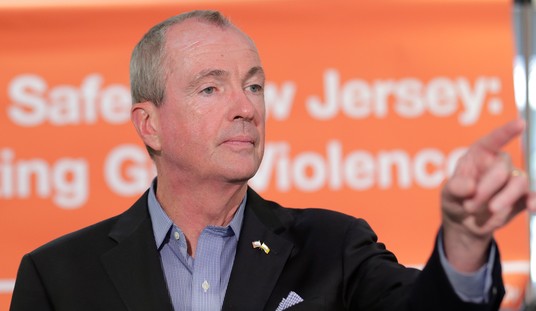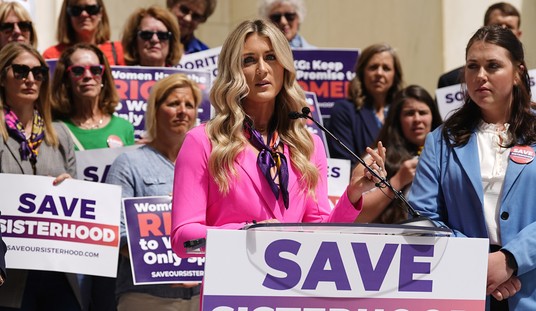Via David Byler, it could happen.
But you can see from the chart below why Frank Luntz thinks political polling will never again be taken seriously if it blows this election. Pollsters have no excuses this time. They were caught by surprise four years ago by the strength of Trump’s appeal to working-class whites and his small but significant inroads with minority voters, especially men. They’ve had years to adjust their assumptions about 2020 accordingly. And they have adjusted, for instance by paying more attention to the educational split in their samples and weighting accordingly to make sure Trump’s base is fully represented.
The question is whether they’ve adjusted enough. To presume to learn the lessons of 2016 and then underestimate Trump again in 2020 by the same margin would mean the industry is incapable of calibrating its measurements of the electorate properly even when given a four-year heads-up on the dynamics of a candidate’s electoral coalition. They’ll never recover.

Do the electoral math on the middle column there and you’ll find Sleepy Joe with pick-ups in Michigan and Arizona and a razor-thin lead in Pennsylvania. Michigan and Arizona would get him to 259 electoral votes when added to Hillary’s 2016 total. Holding on in Pennsylvania would give him another 20 and the presidency, but a victory by less than a point would mean a civic and legal nightmare — a recount, court challenges to mail-in ballots, an utter fiasco. An election in which control of the White House turned on the tiniest of margins in PA would truly be the worst outcome for America. Which means, since it’s 2020, it’s highly probable if not certain.
But let’s step back and look again at the chart.
One thing you’ll notice here is that Trump wins Wisconsin, an outcome that seems even more far-fetched this year than it did in 2016. Wisconsin was the site of the most infamous polling miss of that campaign, with surveys predicting a Clinton win in the six- to seven-point range only to have Trump eke it out by less than a point. One problem back then was that there wasn’t a ton of quality pollsters focused on the race: There was Marquette and Monmouth, but many bigger firms stayed away for the same reason Hillary Clinton herself did, namely, they assumed she had the state in the bag. This year, understandably, pollsters are taking Wisconsin seriously. Fox News is polling it, as is the Times, CBS, NBC, ABC, etc etc. RCP has a 4.6-point lead for Biden there today; FiveThirtyEight’s weighted average has Biden ahead by 6.5, with an 86 percent chance of winning. Given the intense attention being paid to the state this year, pollsters underestimating Trump again there — by seven points! — would be an even more catastrophic miss than in 2016. Which seems unlikely.
Another thing you might notice on the chart is that Trump improves quite a bit in Florida and Pennsylvania from his current polling if you assume an error on par with 2016. He gains more than three points in FL and more than five points in PA. But if you look back to the 2016 polling, you’ll find that most surveys in the final days of that race were much more accurate than whatever the Times is using as its own baseline. The final RCP average in Florida actually had Trump ahead by four-tenths of a point. He ended up winning by 1.2. That should mean a polling gain of just 0.8 points for Trump this year if there’s a 2016-scale underestimation of his support — which would not be enough to erase Biden’s lead, per the Times’s numbers. Similarly, Clinton led in Pennsylvania by just 2.1 points when polls opened on Election Day. Check out how much ground Trump made up in that state in the final week that year:

There was a huge break towards Trump in the last days, probably due to James Comey’s letter reopening the Emailgate probe combined with the habit of late deciders to break for challengers instead of “incumbents.” Trump ended up winning PA by seven-tenths of a point, which means the polling average underestimated him by 2.8 points overall. If, as the Times claims, Biden is now leading in Pennsylvania by six, then the same polling error this year should lead to … a reasonably comfortable three-point Biden win.
All of which is a long way of saying that it may be that the Times’s 2016 polling was unusually crappy relative to the competition. *They* missed big on Trump, but (with the exception of Wisconsin) lots of other pollsters were in the ballpark of predicting his share of the electorate in key battlegrounds.
One other thing to notice in the chart above. The polls also missed notably in 2012, but that year they missed by underestimating Democrats, not Republicans. Obama pulled off a more decisive win than data nerds had expected. Modelers like Nate Silver and Nate Cohn have made that point to their readers from time to time on social media this fall, that there’s nothing written in the stars this year that ensures bad polling will benefit Trump. It could be that pollsters have underestimated the ferocious desire among lefties to beat him and are lowballing Democratic turnout. It could be that there’ll be a late break towards Biden among the few remaining undecideds that ends up padding Sleepy Joe’s margins. It could be that Trump’s inroads among Latino voters will end up evaporating before Election Day for whatever reason. The “Trump upset” scenario is real, but the “Biden tsunami” scenario is real too. It may even be more likely than a Trump upset: Amy Walter noted yesterday that, since 1980, no incumbent president has overperformed his job approval by more than four points. Trump’s approval today at Gallup is 43 percent. If he pulls 47 percent of the vote on Election Day in what’s essentially a two-man race with Biden, that leaves Sleepy Joe apt to hit 50 or better. Is Trump likely to eke out another electoral college win with those numbers? I doubt it.
There’s one more thing working against him. As is always true in elections, the demographics of the electorate are different now than they were four years ago. And not in a way that plays to his advantage. “Trump coalition” here represents his base of whites without a college degree. “Biden coalition” describes white college grads plus minority voters.

Winning over college-educated suburbanites should have been a top priority for Trump, especially after that cohort handed the House to Democrats two years ago. He may pay for failing to do so in a big way.
I’ll leave you with one last point about the Times chart up top. It notes that if the national polling right now is off to the same degree it was in 2016 then Trump is trailing Biden by merely six points, not nine. That’s nice, but Nate Silver estimated a few weeks ago that for Biden to be all but assured of winning the electoral college, he’d need to win the national popular vote by … five points. (A margin that large nationally would imply that he’ll get what he needs in the battlegrounds, even if those races are tight.) Assuming Silver’s right then even the Times’s rosy polling-error scenario for Trump should mean a Biden victory. He has to cut further into the Democrat’s lead. He has 10.5 days.








Join the conversation as a VIP Member